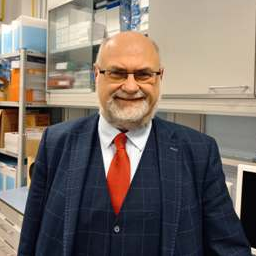Latest Review Papers in Molecular and Cellular Biology 2023
A special issue of International Journal of Molecular Sciences (ISSN 1422-0067). This special issue belongs to the section "Molecular Biology".
Deadline for manuscript submissions: closed (31 March 2023) | Viewed by 68052
Special Issue Editors
Interests: gene expression regulation; DNA replication; bacteriophages; plasmids; human genetic diseases; neurodegeneration
Special Issues, Collections and Topics in MDPI journals
Interests: fibrosis; myofibroblast; wound healing; connective tissue; fibromatoses
Interests: nervous system; cell adhesion molecules; development; synaptic function and plasticity; recovery after trauma; spinal cord injury; traumatic brain injury; neurodegenerative diseases; microglia; mitochondria
Special Issues, Collections and Topics in MDPI journals
Special Issue Information
Dear Colleagues,
This Special Issue aims to collect high quality review papers in all the fields of Molecular Biology. We encourage researchers from related fields to contribute review papers highlighting the latest developments in Molecular Biology, or to invite relevant experts and colleagues to do so. Full length comprehensive reviews will be preferred.
Prof. Dr. Grzegorz Wegrzyn
Prof. Dr. Giulio Gabbiani
Prof. Dr. Melitta Schachner
Guest Editors
Manuscript Submission Information
Manuscripts should be submitted online at www.mdpi.com by registering and logging in to this website. Once you are registered, click here to go to the submission form. Manuscripts can be submitted until the deadline. All submissions that pass pre-check are peer-reviewed. Accepted papers will be published continuously in the journal (as soon as accepted) and will be listed together on the special issue website. Research articles, review articles as well as short communications are invited. For planned papers, a title and short abstract (about 100 words) can be sent to the Editorial Office for announcement on this website.
Submitted manuscripts should not have been published previously, nor be under consideration for publication elsewhere (except conference proceedings papers). All manuscripts are thoroughly refereed through a single-blind peer-review process. A guide for authors and other relevant information for submission of manuscripts is available on the Instructions for Authors page. International Journal of Molecular Sciences is an international peer-reviewed open access semimonthly journal published by MDPI.
Please visit the Instructions for Authors page before submitting a manuscript. There is an Article Processing Charge (APC) for publication in this open access journal. For details about the APC please see here. Submitted papers should be well formatted and use good English. Authors may use MDPI's English editing service prior to publication or during author revisions.
Keywords
- molecular biology
- cell biology
- signal transduction
- macromolecules and complexes
- gene expression
- DNA structure, damage and repair
- bioinformatics
- imaging techniques








